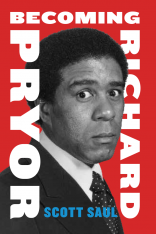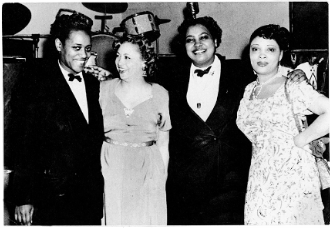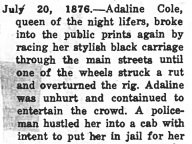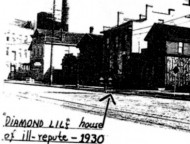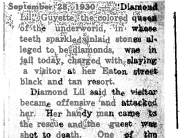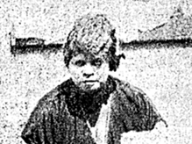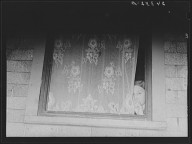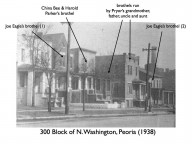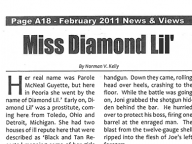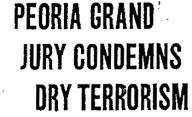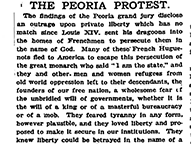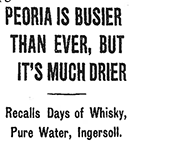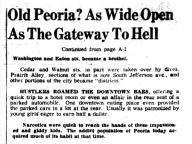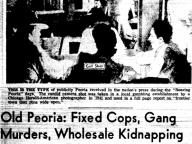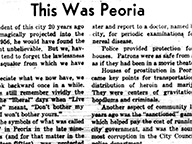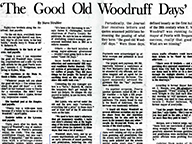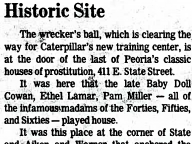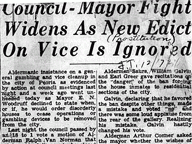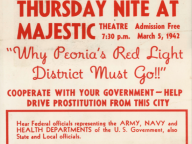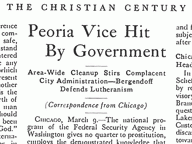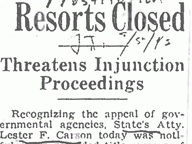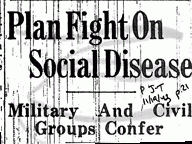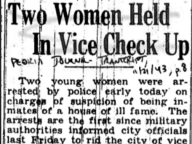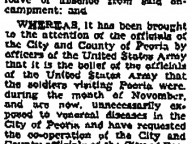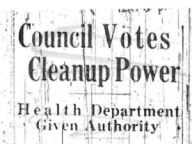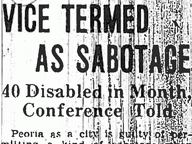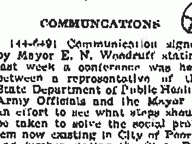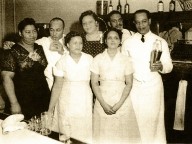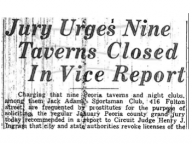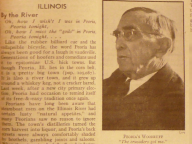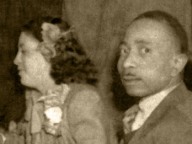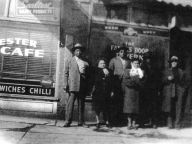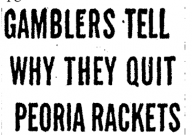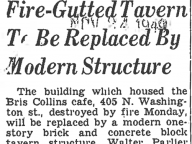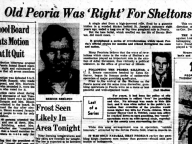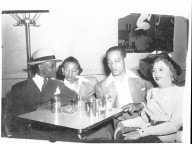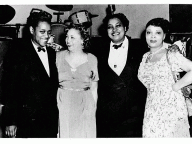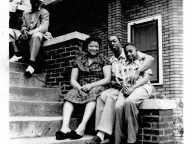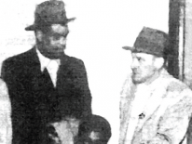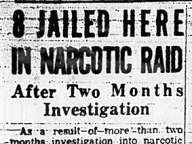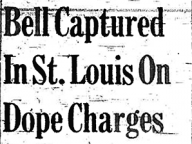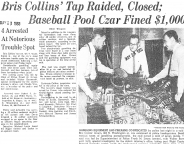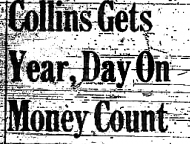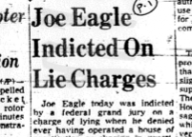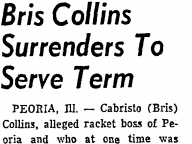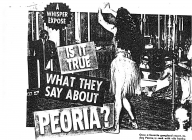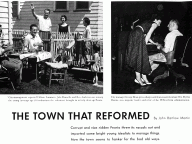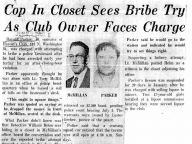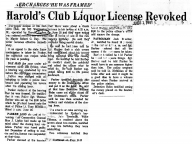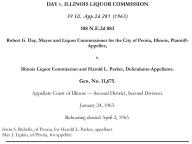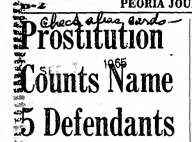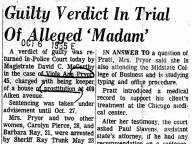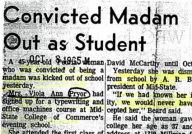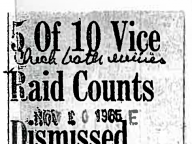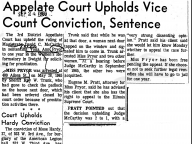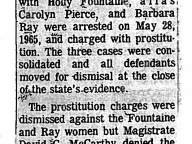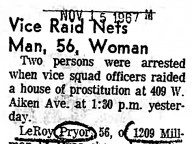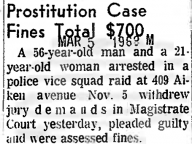Sin City
For more than a half century—from the late-19th century to the mid-20th century— Peoria hummed to the tune of its bad reputation. Far from a blandly typical midwestern town, it evolved into arguably America’s most unchecked sin city, a place where the municipal government worked hand-in-glove with racketeers, madams, and other underground businessmen. However one judged this sin city — and reformers looked at it aghast and tried for decades to shut it down — there was widespread agreement on one thing. It was anything but dull.
City of Bawdy Houses and Gambling Dens (1876–1918)
Sitting on the banks of the Illinois River, a convenient way-station between St. Louis and Chicago, Peoria played host to all sorts of travelers across the nineteenth century. Among gamblers, frontier traders and itinerant laborers, it gained a reputation as a place where any and all desires could be satisfied, and even after it grew into a full-fledged city with its own industries and institutions, the reputation lingered.
Outside observers were shocked by how openly the vice trade flourished in Peoria. City Hall took regular payments from those running gambling and other rackets, and, through the police department, collected license fees from all prostitutes, who were obliged to be checked for “social diseases” by certified doctors.
Because it still carried a disreputable odor, the business of vice was open to all comers. Not surprisingly, at a time when none of Peoria’s larger employers hired blacks in anything other than menial roles, some black Peorians turned to the red light district as the best place to secure their livelihood.
Black women in particular achieved unprecedented wealth and power as purveyors of sex in turn-of-the-century Peoria. Adeline Cole astonished locals by riding her team of black horses through the city streets and left a fortune worth millions upon her death in 1898; “Diamond Lil” was famous for her diamond-studded teeth in the 1920s and 1930s. Both enjoyed relative freedom in a society that otherwise marginalized women of color.
Peoria Roars between the Wars (1919–1941)
When the United States ratified the Eighteenth Amendment in 1919, Peorians rightly worried that two of their major industries — distilling whisky and running taverns — would suffer dearly. However, the distilleries were re-purposed to making industrial solvents and non-alcoholic food items, and the taverns continued to serve bootlegged liquor. Peoria kept alive its bad reputation.
Ten years later, the Great Depression crippled Peoria’s industrial sector but left its brothels relatively untouched. Gangsters continued to run rackets and gambling was widespread. Vice was such an ongoing success that, as World War II approached, some citizens of Peoria once again started organizing against the keepers of brothels, taverns and any sort of immoral activity. The city reported a divorce rate double the national average.
This was the city Marie Pryor reached in the mid 1930s after leaving Decatur, Illinois, with her husband and four teenage children. The Pryors’ first establishment was on Eaton Street, not far from Diamond Lil’s infamous “Oasis.” Eventually they moved onto North Washington Street, where they joined an already booming mix of legitimate and illegal businesses stretched along several blocks on the edge of downtown.
Strange Bedfellows (1942–1952)
The world of North Washington Street was a troubled and troubling one. Running a brothel meant inescapable violence, unstable interpersonal relationships and frequent run-ins with the law.
At the same time, the red light district of Peoria could allow for a close-knit sense of community. As in any typical Midwest neighborhood, stoops and porches provided social spaces for friends and family to gather—they just happened to be the stoops of brothels. The nightclubs and taverns that doubled as gambling houses and drug dens were also social spaces for Peorians to gather, drink, dance and hear the latest jazz. They were the kind of places where a family friend who owned a club could give a struggling up-and-coming comic like Richard Pryor a regular gig.
The half-legal nature of Peoria’s “illegitimate” businesses also afforded connections to the more legitimate sides of Peoria. Families like the Pryors could run a brothel or two, but also a club like the Famous Door. Their neighbor Bris Collins was involved in prostitution, narcotics and counterfeiting, but was also a straight-up proprietor of clubs, a motel, and a barbecue joint.
In pre-reform days, these underground entrepreneurs had direct connections to the city’s political structures through regular bribes and sympathetic patronage. Even after reforms swept out the most corrupt politicians, members of Peoria’s underworld attempted to stay engaged with local politics. In a head-turning move, club owner Harold Parker ran for alderman in 1961 — as a Republican allied with the cause of reform.
The Sun Sets on Sin City (1953–1980)
By the mid-1950s, political reform was starting to take its toll on Sin City. Without explicit protection from politicians and corrupt police, it became increasingly difficult to run an illegal business.Many of the gangsters, at least the living ones, had already been pushed out in the late-1940s.
In the 1950s and 1960s, raids on brothels and gambling establishments became a much more regular part of life. At first they seemed an expensive part of doing business, but eventually laws began to change: instead of hefty fines, madams faced serving serious jail time and having their business padlocked.
Criminal activity in Peoria was also less of local issue after World War II, as federal investigations took down both drug and prostitution rings run out of the city. Ultimately, the heyday of Peoria’s wide-open days came to a symbolic end when several blocks of North Washington were condemned as blighted and demolished to make way for a new bridge connecting Peoria to East Peoria.
Sin did not disappear from Peoria just because it was no longer the city’s calling card. As longtime Mayor Ed Woodruff was fond of saying, “You can make prostitution illegal but you can’t make it unpopular.” Prostitutes were no longer licensed or regularly checked up on by doctors, but they continued to turn tricks by walking the streets. And as prostitution moved further from the public’s eyes, conditions worsened: stories of serious abuse and drug addictions became commonplace.
Gone were the days of Adaline Cole’s lavish lifestyle and vast fortunes. Arrived were the days of the late 1960s when women like Ann Pryor, Richard’s stepmother and the woman who put food on the family table, was still soliciting sex even though she was awaiting sentencing for a previous arrest and dying of mouth cancer. Over the next several decades, more of the old brothels would be demolished and taverns closed to make way for new corporate offices and training centers. But women continued to walk the streets and men like Bris Collins still owned motels, on the outskirts of town, where fantasies were for sale.
Did it Play In Peoria?
Today, in the popular imagination, Peoria is rarely remembered as Sin City. The old vaudeville line of “Will it play in Peoria?” has been taken up by politicians and marketing researchers who use Peoria as a stand-in for middle American ordinariness.
In many ways, though, Peoria never completely outgrew what it once was. As late as 1974, the city was rocked by a municipal corruption scandal wherein Peoria’s former mayor was arraigned for accepting bribes in connection with the issuance of liquor licenses. Up to 2013, visitors to the city could walk a few steps from the courthouse and find themselves in Big Al’s strip club, an anchor business in downtown.
Sin City lives on most profoundly in the recorded comedy of Richard Pryor, where Peoria was itself a larger-than-life character. Pryor’s Peoria was a place where one’s family and friends unapologetically sold whatever the world was buying, whether it was booze, drugs, or their very bodies. The entire world was a hustle. It seemed everyone was on the make for their piece of it.
